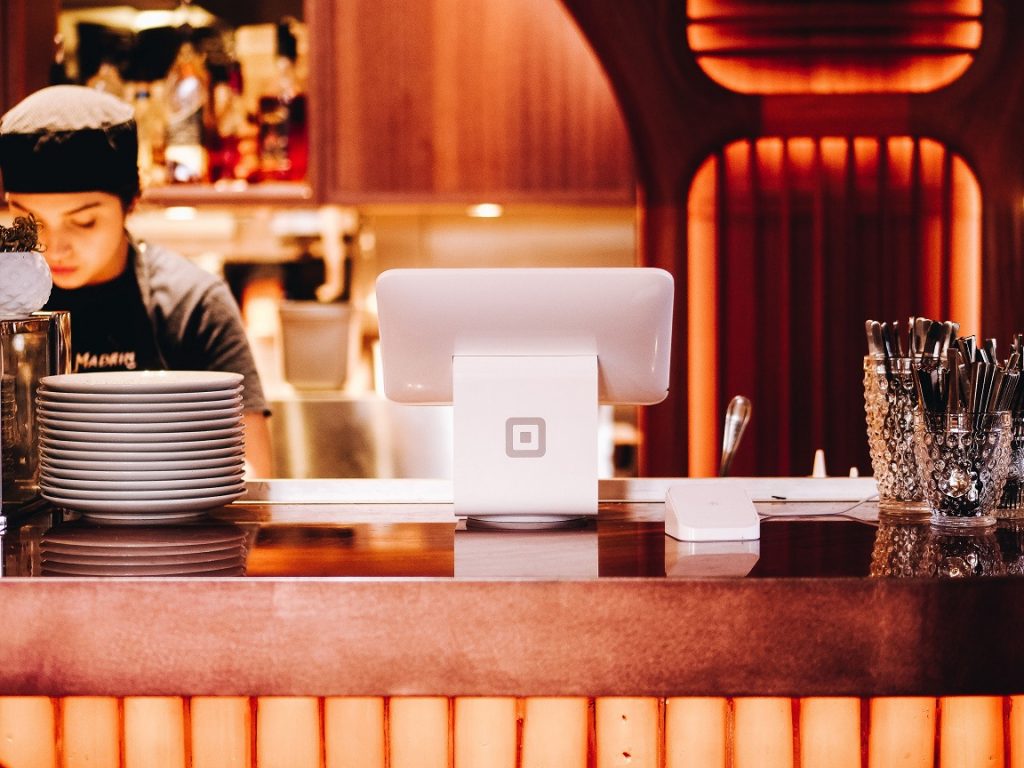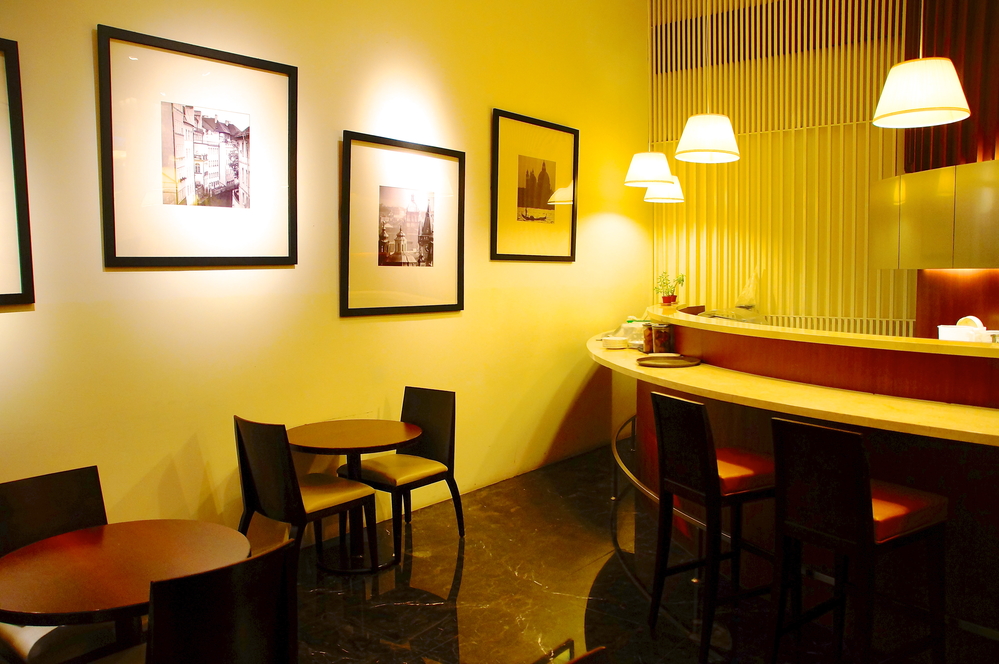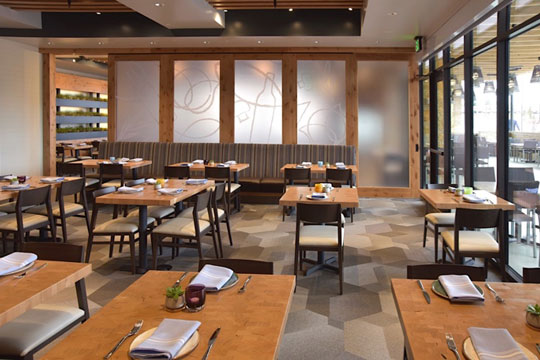Chinese Food Islamabad: Appreciate Genuine Chinese Cuisine at its Best
Chinese Food Islamabad: Appreciate Genuine Chinese Cuisine at its Best
Blog Article
Savor Authentic Oriental Cuisine With a Pan-Asian Twist for a Culinary Journey
Beginning on a cooking journey via authentic Asian food, improved with a Pan-Asian spin, provides an one-of-a-kind opportunity to check out the abundant tapestry of tastes that define the area's diverse culinary traditions. As you ponder these enticing recipes, consider the social stories and historic impacts that form them, each bite providing a story waiting to be found. Fine dining experience Islamabad.

Checking Out Pan-Asian Tastes
In the world of worldwide gastronomy, Pan-Asian food sticks out for its impressive diversity and the unified interaction of flavors from various Eastern cultures. This cooking technique celebrates the one-of-a-kind ingredients and rich customs found throughout the continent, producing a tapestry of tastes that is both appealing and enjoyable. Trick to Pan-Asian food is its capability to stabilize different flavors-- pleasant, salty, spicy, and sour-- while highlighting the quality and quality of each active ingredient.
From the umami-rich soy sauce of Japan to the intense chili peppers of Thailand, Pan-Asian food provides a substantial combination of flavors. These elements are typically incorporated in inventive means, boosting recipes with layers of intricacy. For circumstances, making use of fragrant herbs such as lemongrass and cilantro, common in Vietnamese and Thai cuisine, includes a revitalizing brightness to recipes, while the unification of coconut milk supplies a creamy, rich appearance.
The emphasis on fresh produce and fragrant flavors makes sure that each meal is not only a feast for the palate however also for the senses. Pan-Asian cuisine welcomes diners to begin on a cooking trip, checking out the large and differed landscapes of Eastern gastronomy with every bite.
Blend Meals to Try
While Pan-Asian food is commemorated for its traditional flavors, the contemporary cooking landscape is significantly embracing combination dishes that mix these timeless elements with influences from various other regions. This innovative method not only honors the rich heritage of Oriental cookeries however also presents novel taste experiences that appeal to modern palates.
A prime example of such a blend recipe is the Korean-Mexican taco, where marinated bulgogi beef is wrapped in a warm tortilla, topped with kimchi and a hot gochujang-infused salsa. This mix weds the bold, tasty flavors of Korea with the vivid, fresh elements of Mexican food. Similarly, sushi burritos have obtained appeal, amalgamating the fragile virtuosity of Japanese sushi with the hearty, hand-held ease of a burrito, often including combination ingredients like tempura shrimp and avocado with a drizzle of wasabi mayo.
One more significant recipe is Thai curry ramen, which infuses the velvety, aromatic flavors of Thai curry into the reassuring brew of conventional Japanese ramen, producing an unified mix that tantalizes the senses. These fusion dishes extend beyond mere uniqueness; they represent a culinary discussion between societies, urging exploration and technology worldwide of Pan-Asian cuisine.
Necessary Ingredients and Spices
To genuinely value Pan-Asian food, one need to recognize the essential components and spices that create its structure. This varied culinary style draws from a rich tapestry of Oriental practices, using an unified blend of structures and tastes.
Aromatic aspects are crucial, with garlic, ginger, and lemongrass being common throughout various Pan-Asian dishes. These components provide an aromatic base that improves the intricacy of tastes. Spices asian fusion restaurant such as star anise, cardamom, and cinnamon present warmth and character, resembling impacts from areas like China and India.

Food Preparation Methods and Tips
Understanding the art of Pan-Asian cuisine calls for experience with its distinct food preparation techniques, each adding to the vivid tapestry of flavors this cooking tradition is commemorated for. Central to these approaches is the stir-fry, a rapid cooking method that preserves the dietary integrity and brilliant shades of active ingredients. Utilizing a wok, the stir-fry technique enables also warmth circulation, necessary for achieving the characteristic texture and taste balance of Pan-Asian dishes.
Another essential strategy is steaming, particularly common in Chinese food. This gentle approach keeps the all-natural flavors and nutrients of components, making it perfect for seafood and veggies. Dumplings, a precious staple, usually gain from steaming, resulting in soft, succulent appearances.
Grilling, additionally indispensable, presents great smoky depths to meals such as Oriental bulgogi or Japanese yakitori (Romantic restaurants Islamabad). This technique commonly includes seasoning ingredients, allowing flavors to pass through deeply before food preparation over an open fire or warmer
Last but not least, mastering the art of balancing tastes-- pleasant, sour, salty, bitter, and umami-- is essential. Properly layering these components can raise a recipe from common to extraordinary, offering a complicated and satisfying culinary experience that symbolizes the significance of Pan-Asian food.
Dining Experiences Worldwide
Throughout the globe, Pan-Asian food uses an unrivaled eating experience, celebrated for its rich tapestry of flavors and lively presentations. This culinary phenomenon has transcended cultural limits, catching the hearts and tastes buds of food lovers worldwide. In multicultural cities like New York, London, and Sydney, Pan-Asian dining establishments offer as fusions where cooking traditions from Thailand, Japan, China, and beyond merge, providing diners with a diverse mix of meals that highlight the region's diversity.
The international allure of Pan-Asian cuisine lies in its ability to use both authenticity and innovation. Chefs skillfully marry traditional ingredients such as lemongrass, soy sauce, and miso with modern techniques, leading to dishes that are both familiar and refreshingly brand-new. This combination allows diners to embark on a cooking journey that appreciates heritage while welcoming modernity.
Additionally, dining experiences are raised via thoughtfully developed atmospheres that mirror the principles of Pan-Asian visual appeals. From minimal Japanese-inspired insides to vivid Thai-themed spaces, each restaurant supplies an one-of-a-kind atmosphere that enhances the cooking offerings. Consequently, patrons are not merely taking in a meal however partaking in a cultural experience, making Pan-Asian dining a genuinely global phenomenon.
Conclusion
The exploration of Pan-Asian food supplies an extensive understanding of the detailed interplay of flavors and cooking traditions across Asia. By accepting fusion dishes such as Thai curry ramen and sushi burritos, the culinary trip not just highlights the flexibility of typical components yet also showcases innovative modern strategies. This gastronomic journey, enriched by cooking techniques and vital flavors, provides an one-of-a-kind possibility to value the cultural diversity and cooking creativity that specify Pan-Asian food on a global range.
Embarking on a culinary journey with authentic Eastern cuisine, improved with a Pan-Asian twist, provides a special possibility to discover the rich tapestry of tastes that specify the region's varied cooking traditions.In the realm of international gastronomy, Pan-Asian cuisine stands out for its amazing diversity and the unified interaction of flavors from numerous Asian societies. Key to Pan-Asian food is its capacity to balance different flavors-- sweet, salty, spicy, and sour-- while highlighting the quality and high quality of each component.

Report this page